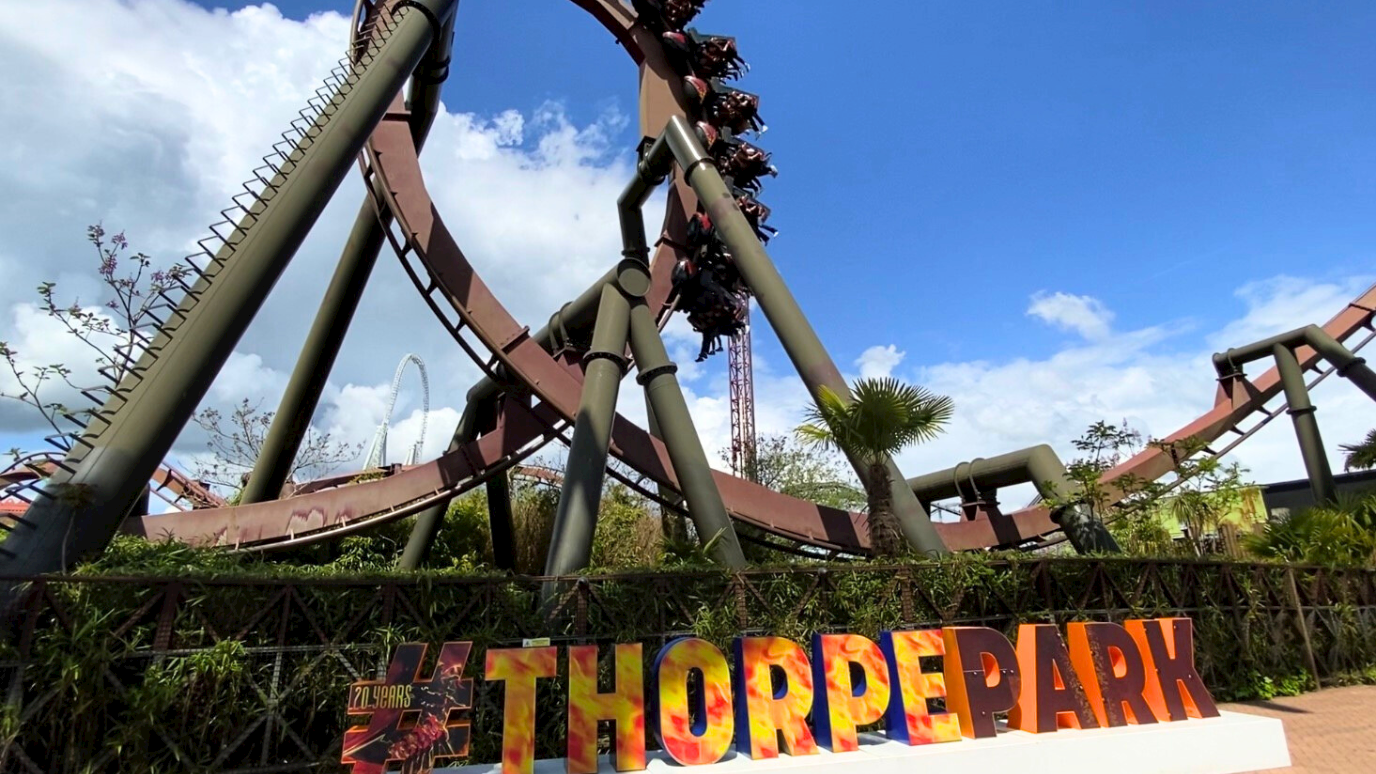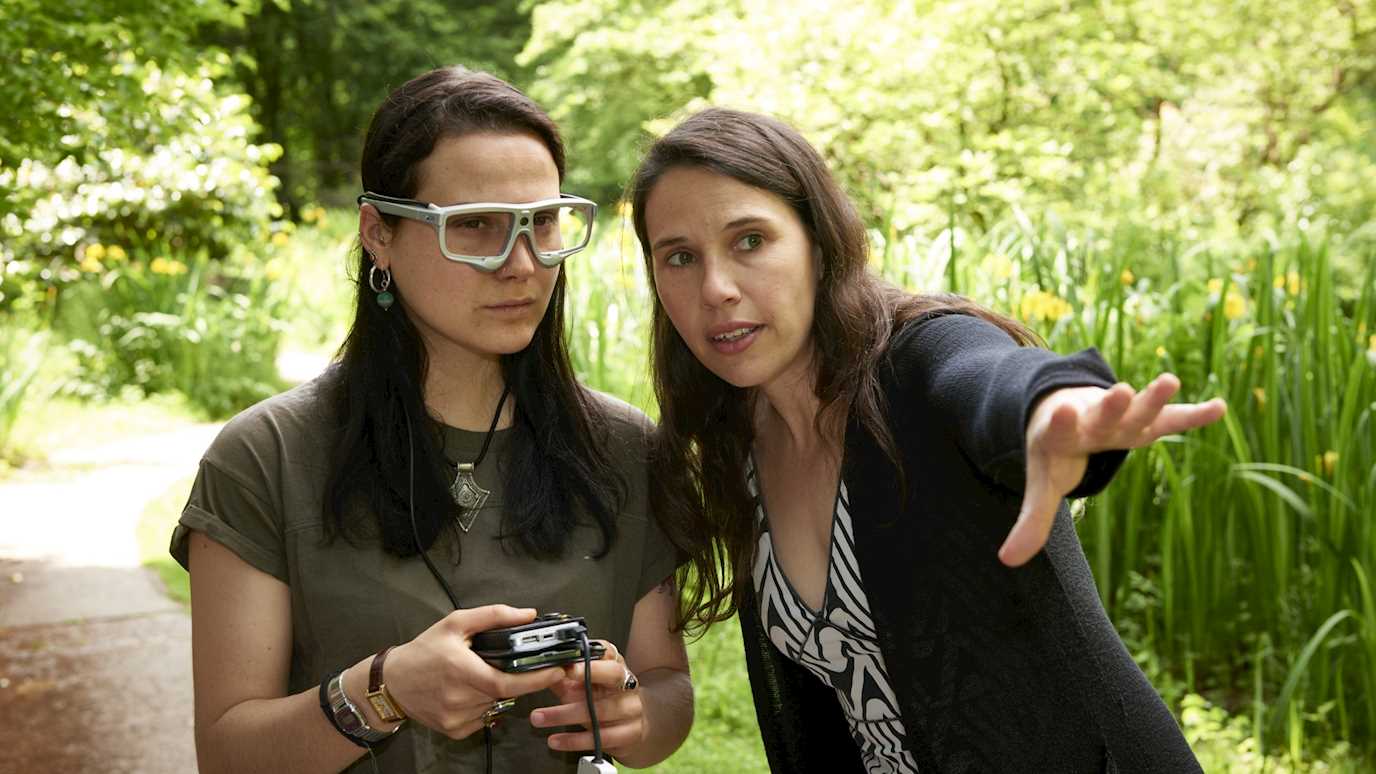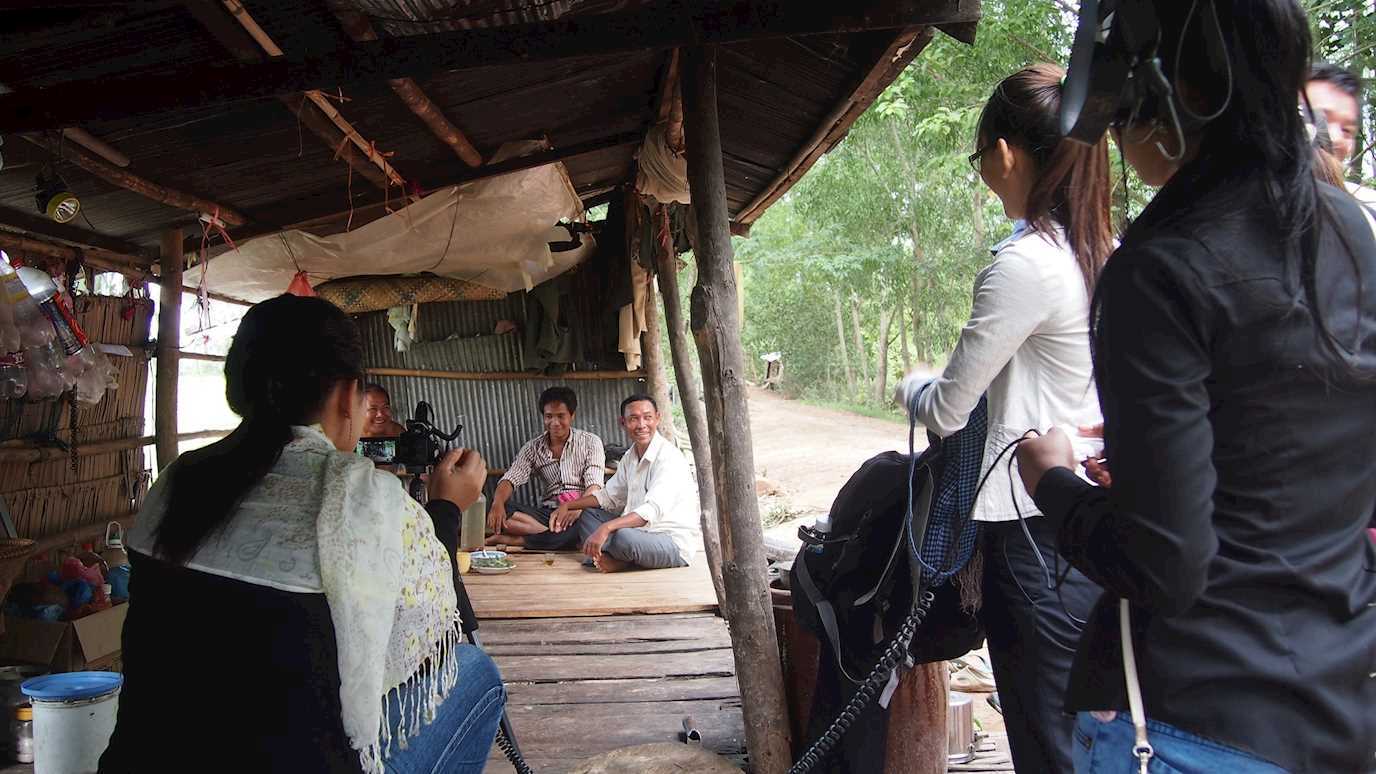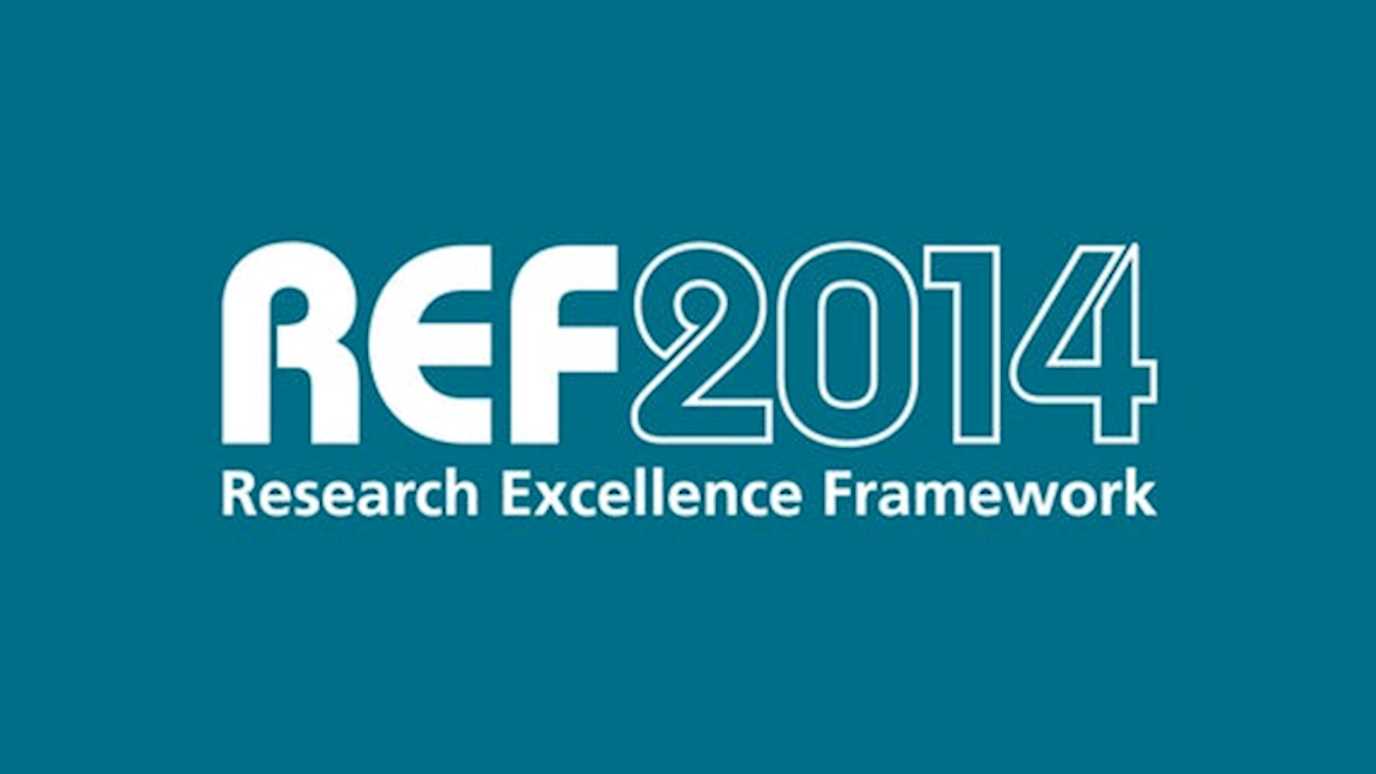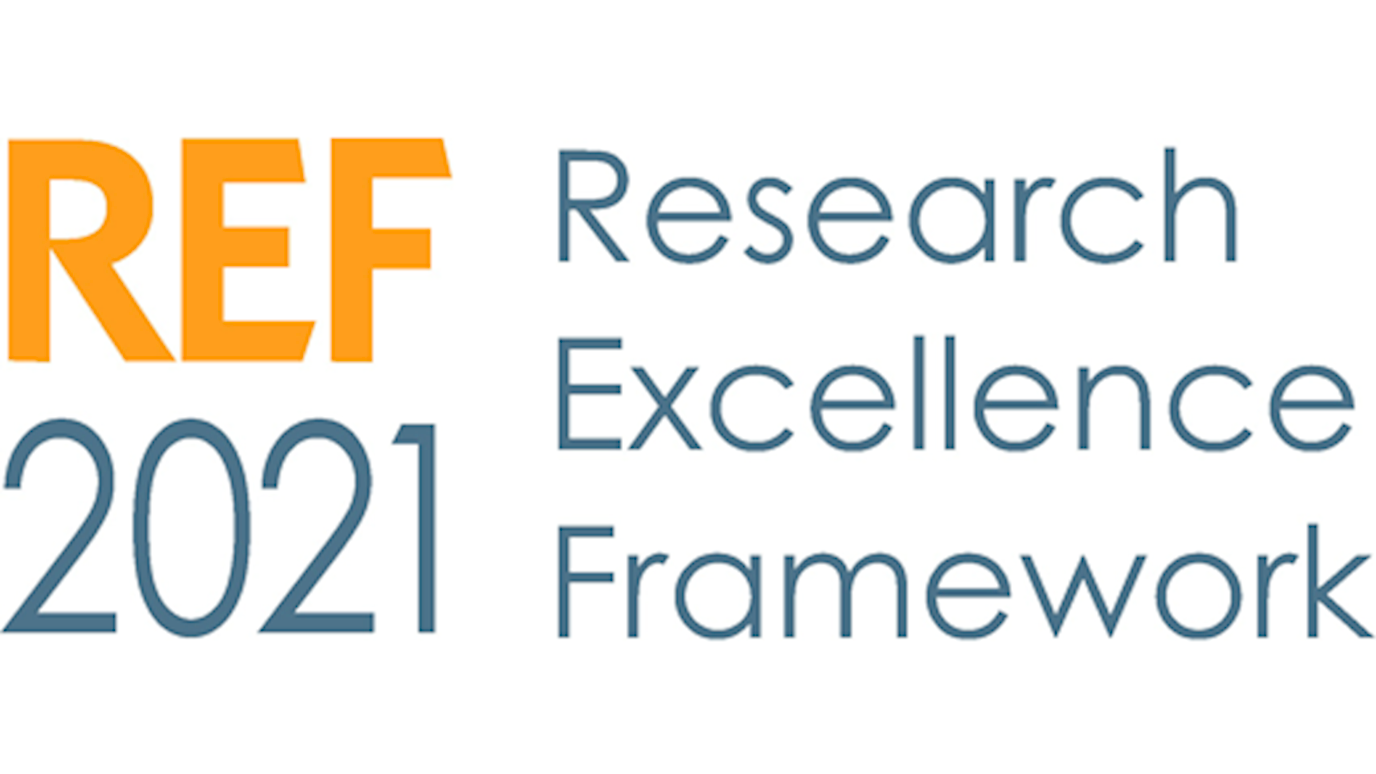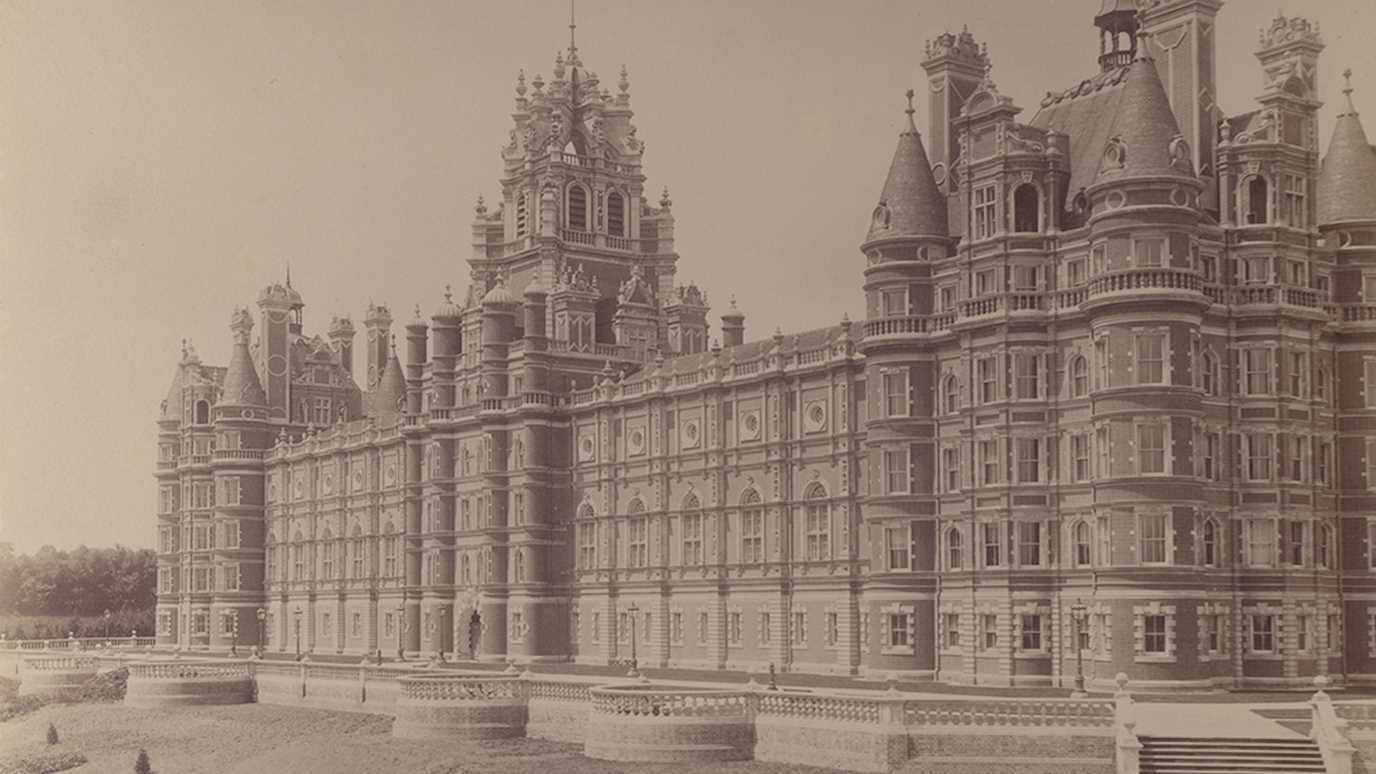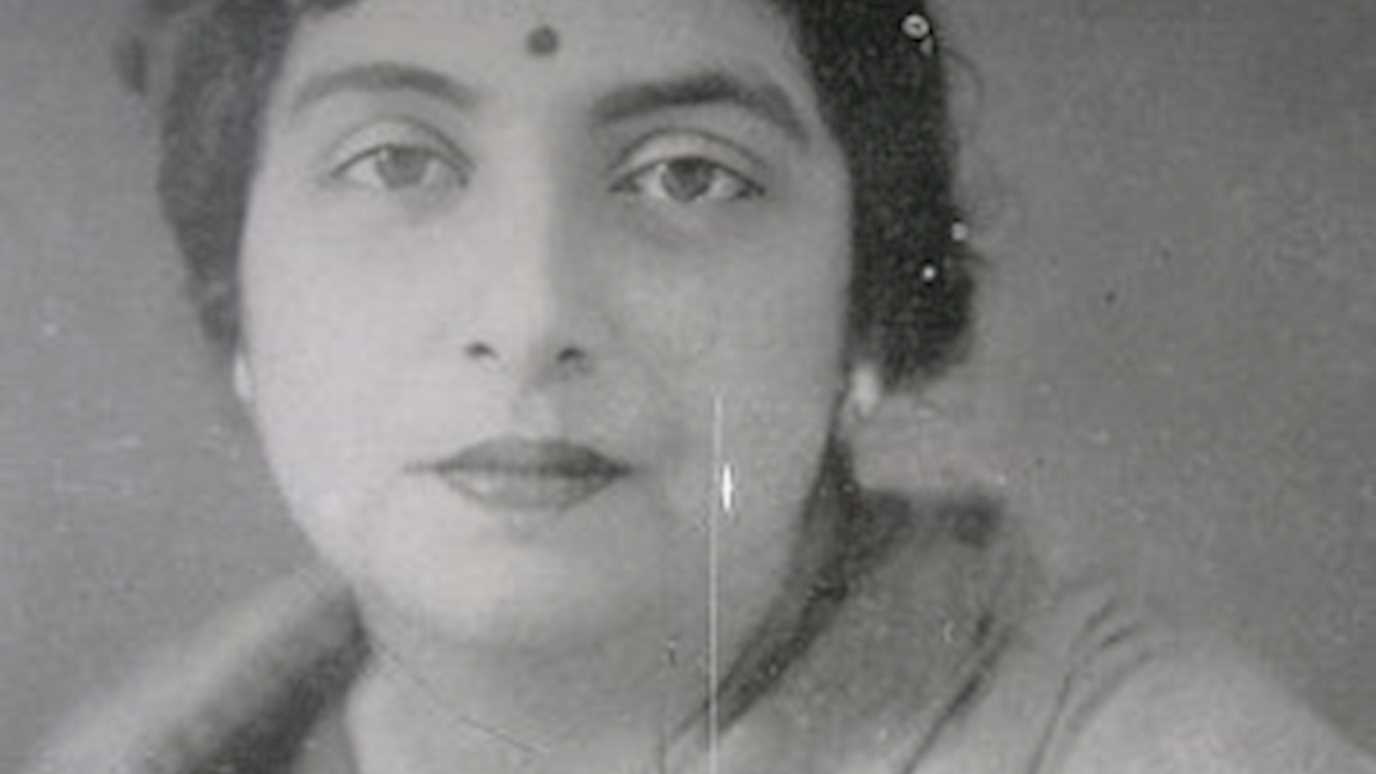The Quaternary is a geological time period covering the last 2.6 million years, up to and including the present, and is characterised by cycles of long term and abrupt climate change, leading to repeated glaciations followed by retreat.
It is also the period in which our own genus evolved and species appeared. The Quaternary has become a focus of intensive academic study and he Centre for Quaternary Research (CQR) is one of the leading centres study of the interaction between climates, environments, people and other biota within the Quaternary. Our research, which covers the last 2.6 million years of Earth’s history, aims to understand environmental, human and biotic responses to past changes in climate. These data allow us to test models and concepts relating to the drivers of past changes, and to infer likely responses to future climate changes and environmental impacts of an anthropogenically warmed world. To gain an understanding of past changes, CQR members: (i) produce high resolution records of climates and environments (particularly from lakes which can preserve seasonally or annually resolved records); (ii) generate new models for the chronology and nature of early human and animal dispersal and behaviour; (iii) work across glacial, fluvial, marine and aeolian systems to quantify past landscape responses to climate change and (iv) apply the knowledge gained to present-day ecosystem management issues (e.g. the role of fire and the advisability of “rewilding”), industrial agenda and policy development for the benefit of a range of stakeholders (notably Defra).

The CQR was established in 1990 and has grown to become one of the leading international research centres in Quaternary science.
The aim of the CQR is to promote interdisciplinary research based on three themes of major importance for understanding Quaternary environmental change: 1) the dynamics of global change; 2) the human dimension of environmental change; and 3) advances in geochronology.
Since its inception the CQR has attracted funding from an increasingly diverse range of sources (NERC, AHRC, ESRC, Leverhulme Trust, EC Framework Programs, British Academy). Major research partnerships and initiatives have been forged in the UK and overseas, which are fostering important advances in understanding Quaternary landscape evolution, abrupt climate change, quantitative palaeoclimate reconstruction, geochronology, biostratigraphy, Palaeolithic and environmental archaeology. The CQR has also benefited from recent £1.5M SRIF investment in laboratory refurbishment that has enhanced the centre’s research capabilities in: OSL dating, tephrochronology, analytical chemistry, soil micromorphology and the analysis of varved sediments.
Our research into the mechanisms, expression, and response to abrupt climate changes focuses on terrestrial environments and primarily addresses the human and environmental impact of abrupt climate changes during the Quaternary period. Such events are of current concern because they can affect all aspects of human life.
CQR staff members teach throughout the undergraduate physical geography curriculum, including third year specialist option courses that provide an important link between the research and teaching roles of academic staff in the centre.
The Centre runs the MSc in Quaternary Science. The course annually recruits c. 20 students, 65% of whom continue to PhD training. This course provides comprehensive postgraduate training on the processes of past environmental change, confronting some of the most profound issues of our time. Click here for more information about the training.
The CQR is also part of the London NERC Doctoral Training Partnership, involving University College London, Kings College, Queen Mary, Brunel, Birkbeck, the Natural History Museum, the Institute of Zoology and Kew. Thirty-five studentships are available annually. If you are interested in pursuing a PhD in Quaternary Science, please make informal contact with academic members in the group and see here for deadlines and details of how to apply. Other funding opportunities may also be available so please make enquiries.
CQR themes
The CQR group of academics, post-doctoral researchers and PhD students is advancing science on four themes of major importance for understanding Quaternary environmental change on a global scale. We conduct research in a variety of locations in the UK, as well as elsewhere in Europe, the Arctic, North America, Patagonia, North and South Africa, China.
Glacial reconstruction at multiple timescales
This research uses multiple methods to reconstruct past glacial dynamics. We use high resolution remote sensing to map glacial extent over the satellite era and to map landforms demarking former glacial extent. We use multiple chronological methods to determine and date the location of former ice margins, including cosmogenic nuclide dating, varve chronology, radiocarbon dating and Optically Stimulated Luminescence dating. These data provide detailed reconstructions of past ice-sheet and glacier dynamics, yielding insights into future glacier behaviour.
High-resolution terrestrial records of global climate change
Research is currently being conducted in Britain, Europe, Africa, China and the Americas into new, high-resolution archives of palaeoclimatic and palaeoenvironmental change. This adopts a deliberate multiproxy approach, encompassing sedimentology, geochemistry, tephrochronology, micromorphology and multiple palaeobiological techniques, underpinned by geochronology. Further details and projects can be seen here.
Human and faunal responses to global environmental change
This research utilises state-of-the-art techniques such as 3-D geometric morphometrics combined with molecular (ancient DNA) analyses to identify dispersal, turnover and extinction events at population-level resolution in different biota. The theme also engages with the reconstruction of patterns of early human evolution and dispersal in North Africa, Arabia, Europe and Beringia through the construction of robust chronologies for archaeological sites, reconstruction of human diet and the study of changing landscapes and environments.
Landscape and climate interactions
This research considers the mechanisms and impacts of glacial outburst floods and the investigation of climate and human drivers of Holocene river response through the incorporation of integrated alluvial stratigraphic and hydraulic flood modelling approaches.
Interaction of tectonics and climate change in Eurasia
Research in this field focuses on the study of loess archives of atmospheric dust formation and the application of geochemical and isotopic finger-printing tools to understand long-term shifts in climate and environment during the Neogene.
Partners
CQR research partners
Collaborative relationships form a key part of our approach to research. These collaborations are with other academic institutions, governmental and non-governmental organisations throughout the world. Some collaborations have included joint PhD supervision funded by the NERC and AHRC CASE studentship schemes, and through undergraduate dissertation placements).
Recent research partners include:
Varve analysis
Analysing abrupt climate change using varved sediments
Innovative Varve Analysis
The Greenland ice-core records have demonstrated that pronounced, decadal-scale climate shifts occurred during the last glacial cycle. In order to establish high-resolution regional correlations, palaeoclimatic records obtained from marine and terrestrial sedimentary environments need to be obtained that are of comparable temporal resolution. The only sediment records that will normally enable this degree of age precision to be achieved are annually-laminated (varved) deposits. The CQR have an established record of analysing these varved sediment records from both cold-climate and temperate environments. To undertake this work we combine comprehensive fieldwork using industrial-scale coring rigs alongside detailed analysis of sediments using: thin section micromorphology, micro-xrf core scanning, palaeoecology, grain size analysis, and Electron microscopy. Using these techniques, the CQR team able to identify, define and count annual sediment layers with very high precision, and to cross-validate the results obtained by different analysts.
Clastic varves and the last glacial to interglacial transition
In lakes that occur in extremely cold environments, the sediments laid down in winter contrast markedly with those that accumulate in summer. In the summer, the lake surface is not frozen, so that the water can be agitated by surface winds, internal currents, inflowing streams and other processes. Very fine particles (clays, fine silts) are constantly kept in suspension, but coarser material (e.g. sand) will sink to the bottom of the lake. In the winter when the lake surface is frozen, the lake is protected from these influences, the water is stilled, and fine material can then sink. The end result is a series of laminations of contrasting particle size, with coarser summer and finer winter layers. Annual layers can therefore be identified as lamination couplets (varves), their number providing an estimate of the duration of the period over which the varves accumulated.
Varved sediment sequences which span the LGIT have been investigated in a number of sites in continental Europe, Scandinavia and Greenland, where they can be used for dating purposes (varve chronology). Although records of varved sediments have been reported from sites in Britain, and a few examined quite closely, very feww robust varve chronologies have ever been developed for the period 16 to 8 ka BP. We are the first group to undertake this work , and our ongoing research focusses on deposits that accumulated in Scotland where ice-dammed lakes were formed by the advance of glacier ice during the Loch Lomond or Younger Dryas Stadial (c. 12.9-11.5 ka BP), the last occasion when glaciers existed in the British Isles. Two of these, Glen Roy-Glen Spean and to the south-east of Loch Lomond were studied as part of the NERC-funded RAPID programme.
Biochemical varves and previous interglacials
Biochemical varves form as a result of seasonal changes in bio-productivity and water chemistry, and are characterised by the growth and deposition of microscopic organisms and the biologically driven precipitation of minerals such as carbonate. They typically form during warm climate intervals, known as interglacials, and allow us to reconstruct the climates and environments of the current warm episode and past interglacials that may act as analogues for the future (Candy et al., 2013).
Understanding the dynamics of landscape response to abrupt climate change has major implications for society, because such events are thought to have contributed to the demise of human settlements in the past (e.g. Orlove, 2005), and are likely to occur in the future (e.g. Williams, 2009). Investigating the impacts of abrupt events during the Holocene is problematic because humans are modifying the landscape, potentially masking the impact of these events. By applying thin section analysis to produce a varve chronology, and stable isotopes as a proxy for temperature, to the study of interglacials (e.g. MIS 11) that are suggested to be analogous to the current interglacial (Berger and Loutre, 2003), it is possible to construct high-resolution records of how climate varies and evolves during a Holocene-like interglacial, but without the impact of Humans.
Orlove, B., 2005. Environmental Science and Policy 8, 589-600.
Berger, A., Loutre, M.F. (2003). Geophysical Monograph Series 137, 17-26.
Candy, I. et al., 2013. Earth Science Reviews
Orlove, B., 2005. Environmental Science and Policy 8, 589-600.
Williams, P.D., 2009. International Journal of Green Economics 3 (1), 63-76.
Recent Publications
Palmer et al (2008) Annually laminated Late Pleistocene sediments from Llangorse Lake, South Wales, UK: a chronology for the pattern of ice wastage.Proceedings of the Geologists Association, 119, 3-4, 245-258.
Palmer et al (2010) Annually resolved events of Younger Dryas glaciation in Lochaber (Glen Roy and Glen Spean), Western Scottish Highlands. Journal of Quaternary Science, 25, 4, 581-596. Doi: 10.1002/jqs1370
MacLeod et al (2011) Timing of glacier response to Younger Dryas climatic cooling in Scotland. Global and Planetray Change, 79, 3-4, 264-274. Doi: 10.1016/j.gloplacha.2010.07.006
Palmer et al (2012) Evidence for phase-locked changes in climate between Scotland and Greeland during GS-1 (younger Dryas) using micromorphology of glaciolacsutrine varves from Glen Roy. Quaternary Science Reviews, 36, 114-123. Doi:10.016/j.quascirev.2011.12.003
CQR Varve team
Dr Adrian Palmer
Dr Alison MacLeod
Dr Ian Candy
Dr Simon Blockley
Gareth Tye
Jenifer Sherriff
Jacob Bendle
Vertebrate responses
Vertebrate responses to abrupt environmental change
Gully Cave in Ebbor Gorge, Somerset, contains a previously unstudied cave fill sequence in an area rich in Palaeolithic and Pleistocene cave sites. Since 2006, excavations have been led by Danielle Schreve, with Ian Candy and Tom White (University of Oxford), in order to investigate the sediments contained within and to examine evidence for biological responses to abrupt climate change through the fossil vertebrate assemblages present.
The excavations at Gully Cave have exposed the upper part of the cave fill and revealed a red, limestone-rich breccia, capped by a densely cemented carbonate flowstone, in turn overlain by an organic-rich sediment containing numerous fragments of modern wood and recent mammal bone. The breccia has proved to be spectacularly rich in the remains of Late Pleistocene vertebrates, specifically an extremely abundant small mammal fauna and a diverse range of birds, but with an important large mammal assemblage, including wild horse (Equus ferus), aurochs (Bos primigenius), red deer (Cervus elaphus) and reindeer (Rangifer tarandus). The higher level deposits in the cave preserve an important assemblage of clear cold-climate affinities, including reindeer, Arctic fox (Alopex lagopus), Norway lemming (Lemmus lemmus) and steppe pika (Ochotona pusilla). The excavations have now yielded 23 mammalian taxa, at least 7 bird taxa and 19 molluscan taxa, making it the richest terminal Pleistocene faunal site in Britain.
An extensive programme of radiocarbon dating, supported by the Leverhulme Trust’s Ancient Human Occupation of Britain project, has revealed that the cave deposits excavated so far span the early Lateglacial interstadial (Bølling, Greenland Interstadial 1e) to the early Holocene. Currently, there is no other cave site in Britain that has this level of completeness for this part of the Late Pleistocene, allowing patterns of high-resolution climate change visible in long proxy records such as the Greenland ice cores to be directly compared with a terrestrial sequence and highlighting the impacts of rapid climate change on the vertebrate fauna.
The work has been undertaken with the permission of the National Trust and Natural England and with financial backing from the latter, from the Quaternary Research Association and chiefly, from the Leverhulme Trust-funded Ancient Human Occupation of Britain project.
ERC Postglacial
High resolution palaeoclimate reconstruction and hunter-gatherer lifeways
Researchers at Royal Holloway are leading members of the past environmental reconstruction for a major ERC funded research project POSTGLACIAL (Postglacial hunter-gatherer lifeways). This project is based on understanding human adaptation to climatic environmental change at the end of the last ice age and is led by archaeologists at the University of York (Prof. N. Milner, PI.) The RHUL contribution to this project is to lead the palaeoclimate reconstruction for human occupation of the region from the retreat of the ice sheets around 22,000 years ago through a series of abrupt climatic transitions that culminate in more stable environmental conditions during the mid-Holocene. This is via high-resolution analyses of palaeo-lake records from former Lake Flixton near the internationally important Mesolithic site of Star Carr, Yorkshire.
Lake sediments preserved below agricultural fields near the site preserve very high quality archives of abrupt climate change, covering roughly 16,000-8,000 BP with very long depositional sequences over key periods of climatic transition. These are now being studied by RHUL staff and students for Oxygen isotopes, chemical stratigraphy, pollen, tephra, micromorphology, micro-xrf scanning, and extensive radiocarbon dating. The results reveal a dynamic local system that for a brief period is ideal for human occupation but also an important long term record of climate change for the North Atlantic region.
This is a major collaboration between palaeoclimate scientists at RHUL and Southampton and archaeologists at York, Manchester and Chester. The RHUL expertise provides key scientific underpinning for the palaeoclimate work but also through our track record on integrating archaeology and palaeoclimate records (NERC funded RESET project and the Leverhulme funded AHOB project). We provide the key interface for studying the impact of abrupt late Quaternary climate change on human groups in the early Postglacial world. Key questions include the impact of the Younger Dryas, Pre-Boreal Oscillation, 9.3BP and 8.2BP cold reversals on human groups re-colonising Northwest Europe after the Last Glacial maximum.
Royal Holloway POSTGLACIAL Team members
Simon Blockley, Ian Matthews, Ian Candy, Adrian Palmer, Paul Lincoln, Rhys Timms, Alison MacLeod, Danielle Schreve, Katy Flowers.
Recent team members
Amanda Farry, Chris Darvill, Rebecca Kearney, Nick Farley, Laura Deeprose
Project website:
Abrupt climate change
The Greenland ice cores demonstrated that shifts in past climate can occur in as little as 1-3 years and frame our understanding of abrupt climate change during the Late Quaternary period. However, how these abrupt changes are expressed elsewhere and how biological, geomorphic, and climatic systems respond to these changes is much less well understood. The CQR addresses these issues and the consequent implications for human societies of such changes. We have an internationally recognised reputation in understanding abrupt climate change in terrestrial settings with specific expertise in understanding human-environment interactions, quantified temperature reconstructions, high-precision chronologies, stable isotopes, and the analysis of annually laminated (varved) sediment sequences.
Recent and on-going projects addressing abrupt climate change include:
NERC funded – ‘Response of Humans to Abrupt Environmental Transitions’ (RESET)
NERC funded – 'Dust storms and Chinese loess sources over the last 22 million years'
Leverhulme Trust funded – ‘Ancient Human Occupation of Britain’ (AHOB)
ERC funded – ‘POSTGLACIAL’ (Postglacial hunter-gatherer lifeways)
Industry funded – Wykeham Quarry
Analysing abrupt climate change using varved sediments
Constructing high precision chronologies using Tephrochronology
Vertebrate responses to abrupt environmental change
Leverhulme Trust - Annually-resolved abrupt climate variability across the North Atlantic region [commencing in May 2014]
Research networks involving CQR members and Abrupt Climate change
Tephra
Quaternary Tephrostratigraphy and Tephrochronology
The Royal Holloway tephra group has been one of the leading research groups in the study of distal tephra for well over a decade. The group works predominantly on ash layers that are not visible to the naked eye (cryptotephra) and many of the key techniques for the detection and extraction of cryptotephra from lacustrine and other minerogenic deposits were developed at Royal Holloway (e.g. Turney et al., 1997, Blockely et al., 2005). These are based on density separation of vitreous tephra from host minerogenic and organic sediment and have been used successfully in a number of projects to extract tephra for identification and chemical analyses for provenance purposes from lakes, peat deposits, caves and even fluvial systems. The technique usually works on tephra in the 15-125 µm size range and tephra are identified microscopically after flotation separation. Within the CQR we have a suite of dedicated laboratories for working on both abundant glass shards with several hundred to thousands of shards in a gram of sediment down to facilities that are able to identify just a few shards per gram.
Successful cryptotephra studies that CQR members are involved with include the use of tephra to provide a chronology for Neanderthal resilience to climate change as part of the RESET project (Lowe at al 2012), and act as key tools for underpinning past climate reconstruction, when coupled with a range of other dating techniques and palaeoenvironmental proxies (e.g. Matthews ABERNETHY). The CQR tephra group also plays an active role in integrating tephra as part of an overall event stratigraphic framework for understanding past climate change and is involved in the construction of the COST-INTIMATE group’s event stratigraphy for the North Atlantic region (Blockley et al., 2012) and also in developing new frameworks for the Mediterranean (Bourne et al., 2010) and Asian Pacific regions (Smith et al., 2011).
Blockley, S.P.E., Pyne-O’Donnell, S.D.F., Lowe, J.J., Matthews, I.P., Stone, A., Pollard, A.M., Turney, C.S.M., Molyneux, E.G. 2005. A new and less destructive laboratory procedure for the physical separation of distal glass tephra shards from sediments. Quaternary Science Reviews. 24, 1952-1960.
Blockley, S.P.E., Lane, C.S., Hardiman,M., Rassmussen, S., Seierstad, I., Steffensen, J.P., Svenson, A., Lotter, A.F., Turney, C.S., Ramsey, C.B., – and INTIMATE members. 2012. Synchronisation of palaeoenvironmental records over the last 60,000 years, and an extended INTIMATE event stratigraphy to 48,000 b2k. Quaternary Science Reviews, INTIMATE Special issue 36. 2-10.
Bourne, A.J., Lowe, J.J., Trincardi, F., Asioli, A., Blockley, S.P.E., Wulf,S., Matthews, I.P., Piva, A., Vigliotti, L. 2010. Distal tephra record for the last ca 105,000 years from core PRAD 1-2 in the central Adriatic Sea: implications for marine tephrostratigraphy. Quaternary Science Reviews. 29, 3079-3094.
Lowe, J.J., Barton, N., Blockley, S.P.E., Bronk Ramsey, C., Cullen, V., et al. 2012. Volcanic ash layers illuminate the resilience of Neanderthals and early Modern Humans to natural hazards. Proceedings of the National Academy of Sciences of the United States of America. 109, 13532-13537.
Smith, V., Mark, D., Staff, R., Blockley, S.P.E., Bronk-Ramsey, C., Bryant, C.S., Nakagawa, T., Kyu Han, K., Weh, A., Takemura, K., Danhara, T., Suigetsu 2006 Project Members. 2011. Toward establishing precise 40Ar/39Ar chronologies for Late Pleistocenepalaeoclimate archives: an example from the Lake Suigetsu (Japan) sedimentary record. Quaternary Science Reviews. 30, 2845-2850.
Turney, C S M, Harkness, D D, and Lowe, J J. 1997. The use of microtephra horizons to correlate Late-glacial lake sediment successions in Scotland. Journal of Quaternary Science 12 (6), 525–531.
Abrupt climate change during the LGIT (15-8ka BP)
“Testing regional synchronicity of abrupt climatic transitions during the last glacial-interglacial transition.”
With a prominent position at the North West tip of Europe, the British Isles have been at the forefront of Quaternary Ice Age cyclicity; and as a result of this positioning an extensive topographical and morphological legacy remains across much of the British and Irish landscape.
Of particular significance for the understanding of planetary dynamics, the last Glacial-Interglacial transition (LGIT), informally termed the ‘lateglacial’ and signifying the end of the last ice age, was a period characterised by a series of abrupt climatic oscillations and concomitant environmental instability. Clearly depicted in the annually resolved chronology of the GICC05 timescale, and echoed across the North Atlantic margin in a variety of depositional mediums; these oscillations are thought to have occurred at decadal and sub-decadal scaling’s, and in part driven by internal planetary factors, somewhat contrasting to the broader orbitally driven cycles characterising the large shifts in global climate during the last 2.6 million years. In Britain, such orbitally driven millennial-scale events have been well documented; however, the relative impact of these less pronounced and shorter-lived centennial to decadal scale events has yet to be fully quantified.
In line with the aims of the INTIMATE group, the scope of this project is to investigate and quantify the relative impact of shorter-lived centennial to decadal scale events in Scottish lacustrine deposits, and aims to begin to establish whether such events can be seen to lead or lag the Greenland stratotype.
The legacy of Scottish Quaternary research has yielded a wealth of information regarding the regional floristic signature, and local environmental fluxing. With comparatively recent developments in palaeoclimatic proxies, modes of analysis, and a better understanding of the subtleties of the lateglacial; a reinvestigation of some of these key sites, in conjunction with newly identified depositional basins will help to build a more coherent picture of such a dynamic and climatologically important phase in recent geologic past.
The preliminary work of the PhD has identified 3 lateglacial sites distributed across the West Scottish coastline, giving a broad North/South transect. The 3 sites, Crudale Meadow, Tanera Mor, and Little Lochans will hopefully provide an insight into gradients of change and regional synchronicity, both in a geographic and temporal context. Furthermore an assessment of the relative influence of the North Atlantic as a driver of climatic change during this period can be tested.
This work builds upon one aspect of the CQR, which has historically had a strong Scottish orientation. In many cases advancements in the discipline have in part been made via the study of Scottish lacustrine deposits. Such notable developments have included the microscale analyses of glaciolacustrine varve sediments (Palmer et al 2010; Palmer et al 2011); improvements in tephra extraction methods, tephrochronology and the tephrostatigraphic framework of the late glacial (e.g. Blockley et al 2005; Matthews et al 2011); as well as the adoption of more robust modes of statistical analysis i.e. Bayesian statistics for the construction of age depth models (e.g. Lowe and Walker 2000; Blockley et al 2004).
Focus here will be on palaeoclimatic proxies which are able to yield quantitative estimates of palaeoclimate (i.e. Chironomid and O-Isotope derived summer temperatures), as well as tephrostratigraphy as a means to correlate basins with wider research.
The Wykeham Project
Palaeoenvironmental and geomorphic response to rapid climatic change during the Last Glacial-Interglacial Transition (LGIT ca. 18-8ka BP) in the Vale of Pickering.
This research project, run conjunction with private business partners Hanson Aggregates, is tasked with exploring abrupt climate change during the Last Glacial to Interglacial transition (LGIT ca. 18-8ka BP) at Wykeham Quarry, within the Vale of Pickering, in northeast England.
The Vale of Pickering is an area of international significance in relation to archaeological, glaciological and palaeoenvironmental research throughout the LGIT. The Vale was partially glaciated at the end of the last Ice Age and the withdrawal of ice during warming produced a landscape composed of lakes and gravel ridges exploited by plants, animals and humans. One such lake (palaeolake Flixton) contains some of the earliest evidence of Mesolithic human occupation in the British Isles (Star Carr). Assessing how the landscape and environment evolved during this period of abrupt climatic change is therefore critical in order to understand the context in which early humans were able to successfully subsist.
Wykeham Quarry is situated in a key locality within the Vale, proximal to the suite of archaeological sites around palaeolake Flixton (ca. 2 miles northwest of Star Carr) and within the maximum ice limits of the Last Glacial Maximum. Thus the sediments preserved at the site are likely to provide a detailed record of variations in geomorphic processes, environmental conditions and potentially the presence of human activity throughout the LGIT.
This research project addresses several key research questions:
- What processes have led to the formation and preservation of the LGIT sediments at Wykeham?
- What climatic, environmental and geomorphic variations are reflected in the sediment sequences, and how do these compare regional models of the magnitude and timing of past environmental change?
- Which geographic locations at Wykeham Quarry are most likely to preserve archaeological remains, can these be correlated with other archaeological finds in the Vale and further afield?
In order to answer these questions the following methods are being used:
- GIS, LIDAR mapping, identifying geomorphic features (e.g. morainic features and palaeochannels) associated with the sedimentary sequences.
- Comprehensive fieldwork utilising auger surveys, powered coring, and detailed logging of sedimentary sequences.
- Laboratory analysis of sedimentary sequences in order to: quantitatively reconstruct past environmental conditions via: pollen, plant macrofossil, charcoal, chironomid, coleopteran, thin section micromorphology, grain size, and stable isotope analyses.
- We aim to generate precise chronological frameworks via tephrochronology, radiocarbon dating combined using Bayesian statistics.
RAPID climate change
NERC RAPID Climate Change thematic programme, project NE/C509158/1 : ‘Precise chronology of the timing of changes in behaviour of the North Atlantic THC and their forcing effects, 16-8 ka BP’
The project is concerned with an important transitional period (the Last Glacial-Interglacial Transition: LGIT) which spans the final stages of ice-sheet glaciation in Britain and the early phase of the present interglacial. This period, between c 16 and 8 ka BP, witnessed a number of abrupt and pronounced climatic changes throughout the North Atlantic region and elsewhere, events which are clearly reflected in, and precisely dated by, the Greenland ice-core records.
The overall aim of our project is to test the extent to which the impacts of those abrupt events, as experienced in the British Isles and environs, were the direct consequence of changes in North Atlantic THC. To do this, we need to demonstrate the precise temporal relationships between North Atlantic THC changes on the one hand, and marked changes in environmental conditions in the British Isles on the other. This is something which is presently difficult to achieve at better than centennial precision, because of a number of technical difficulties that compromise radiocarbon dating, the principal geochronological method employed for this time period.
Our project is exploring the potential of three methods which, in combination, may lead to significant improvement in the precision and accuracy with which we can date climatic events, and synchronise the proxy-climate records obtained from marine and terrestrial contexts, and from ice cores: these are varve chronology, tephrochronology and new statistical approaches to age modeling. The key outcomes to emerge so far are outlined below.
Varves
A regional varve chronology for the Lochaber district has been constructed which spans 515 years (Roy and Spean lake systems) while an embryonic chronology for Glacial Lake Blane spanning 295 years has been defined.
The Lochaber series of varves show decadal-scale variations in internal composition and structure that match climatic variations reflected in the Greenland ice-core record. We believe that the Greenland ice and sedimentation in ice-dammed lakes in Scotland were responding to a common climate forcing factor – perhaps decadal migrations of the North Atlantic Polar Front, or variations in solar radiation output.
Counting of the varves and comparison of these laminated sequences with the Greenland records enables us to date events in Scotland with a remarkable degree of precision. For example, the records show that the varves in the Glen Roy-Glen Spean area accumulated over a period of 515 years between 12,119 and 11,506 years ago, and that the glacier ice that impounded the lakes in Glens Roy and Spean reached their maximum extent ca. 840 years after the onset of a major cooling episode which, according to the Greenland ice-core records, commenced around 11,797 years ago.
The onset of climate warming and melting of the ice that impounded the lakes in Glen Roy is dated to 11,570, which is very close to the age of the onset of the present interglacial in the Greenland ice-core records, again suggesting that Greenland and Scotland were dancing to the same climatic tune.
Volcanic glass shards, originating from volcanoes on Iceland (see below), have been found in the varved sediments. This is a very important discovery for it will enable us to validate the above conclusions, and to synchronise the Scottish records with those in the North Atlantic, mainland Europe and Greenland more precisely.
The Croftamie sequence provides an important test of numerical models of the timing of the last glacier ice advance in Scotland, and of the rate of response to climatic triggers, such as changes in the North Atlantic THC
Tephrochronology
Discovery of important new cryptotephras in sites in the British Isles (Pyne-O-Donnell et al., 2007, 2008) which fall within the period of interest to our project (Figure 7).
Discovery of non-visible, discrete cryptotephra layers of probable Icelandic origin in marine basins in the Labrador Sea and in the vicinity of the Laurentian Fan, as well as in other parts of the North Atlantic (Figure 8). These tephra layers were probably disseminated by icebergs or melting sea ice, and hence provide important information on the conditions in, and circulation of, the North Atlantic during the study period.
Extension of the distribution of one of the most important ash beds, the Vedde Ash (dated to c. 12.0 k cal yrs BP), across Europe to sites in southern Germany and Switzerland, the most southerly finds so far (Blockley et al., 2007), and to Lake Yamozero on the Timan Ridge in northern Russia. This is 1200 km beyond the previous most easterly find (St. Petersburg area), and 3,000 km from the source volcano, Katla, in southern Iceland.
The use of tephrochronology to provide a more precise chronology of the retreat of the last British ice sheet.
Discovery of the first cryptotephras in varved records in the British Isles (see ‘varve chronology’ above).
Age modelling
An extensive radiocarbon dating programme at Croftamie has allowed revision of the timing of maximum ice extent at the type-site for the Loch Lomond Readvance (equivalent to the Younger Dryas).
Research in Southern Europe has indicates that the onset and termination of abrupt climate events may be asynchronous with Greenland.
The Royal Holloway RAPID team
Professor John Lowe
Dr Simon Blockley
Dr Adrian Palmer
Dr Sean Pyne O’Donnell
Dr Alison MacLeod






